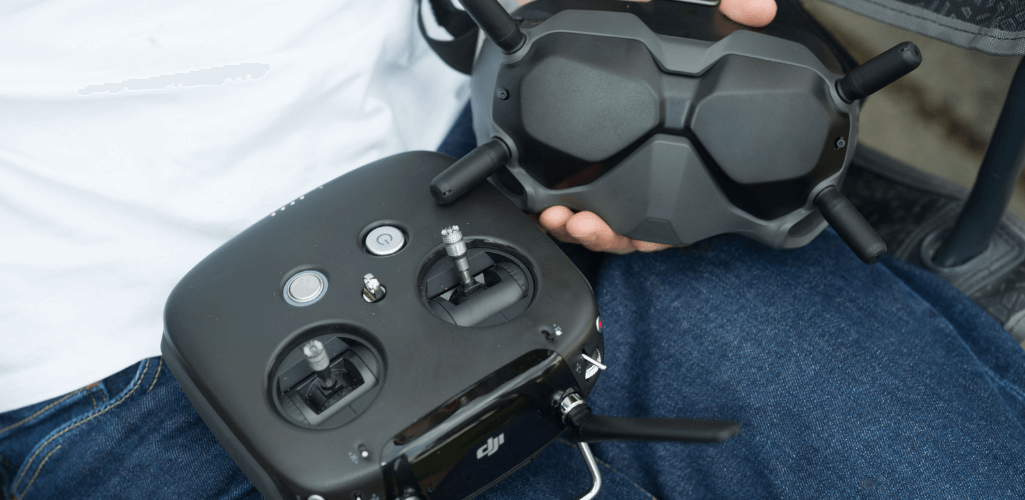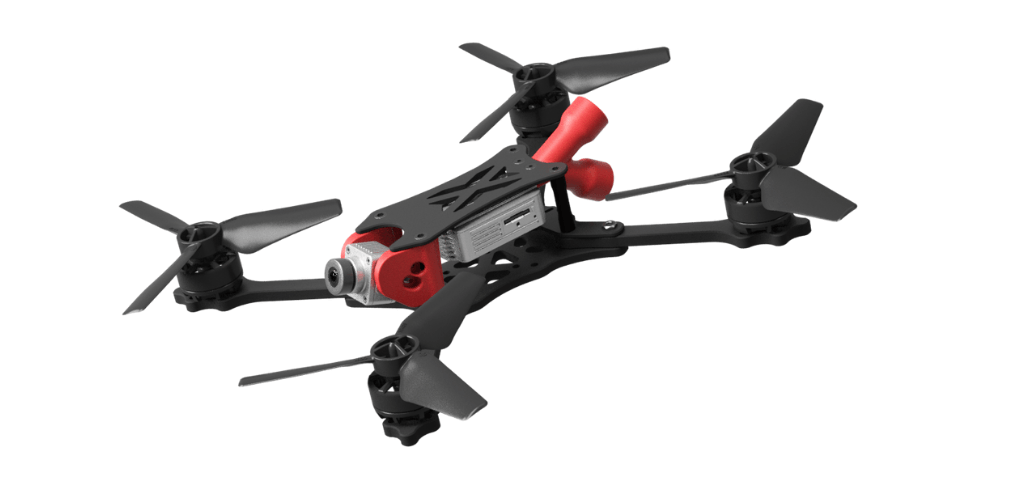
News
FPV Drone Laws In The UK
Explore UK FPV drone laws, covering observer rules, categories, and Article 16 permissions for racing.

FPV drone flying, and the use of goggles, is legal in the UK - but certain rules need to be followed;
Having a competent observer beside the remote pilot is currently an integral part of the permission;
Under new drone laws - starting on December 31, 2020 - FPV flights can be conducted in the Open and Specific categories;
Association members of drone and model aircraft clubs will be afforded greater flexibilities for FPV flights and drone racing, under the Article 16 Operational Authorisation.
Exhilarating, exciting, and immersive – the popularity of FPV (first-person view) drones has soared in recent years, especially with the release of the new DJI FPV Drone.
But what are the UK laws governing this thrilling type of drone use?
This in-depth guide will tell you what you need to know.
What Is FPV Drone Flying?
FPV flying is the ability to control a drone or model aircraft from a pilot’s eye perspective through the use of an on-board camera and ground-based receiving and viewing equipment.

The viewing equipment is normally a tablet or mobile phone screen, or a set of video goggles.
Is FPV Legal In The UK?
Yes, it is. FPV drone flying can be enjoyed in the UK, which will come as a relief to fans of this high-octane activity.
As a result, FPV Goggles - a popular piece of kit for FPV flying - are also legal in the UK.

However, it isn’t a complete free-for-all, and there are certain rules which FPV drone pilots need to follow.
FPV Laws UK
New drone laws started in the UK, and throughout Europe, on December 31, 2020.
But the introduction did not really impact FPV flying.

As part of the rule changes, three categories have been introduced based on the risk level of the mission. These categories are the Open, Specific, and Certified.
When it comes to the Open Category (for the least risky operations), the new regulations will allow FPV pilots to fly without keeping direct eye contact with the drone - provided they are accompanied by an observer, keeping direct visual contact with the drone.
The observer must be located alongside you so they can immediately communicate with you in case they see an obstacle, and give you instructions, such as to immediately land the drone.

It is important to remember that the observer must not use aided vision, such as binoculars, to keep tabs on the aircraft.
However, in emergency situations, such as the need to perform an emergency landing away from the remote pilot’s position, binoculars may be used to assist the pilot in safely performing the landing.
Under the terms of the Open Category, the drone must not exceed 400ft.
Rules about flying close to people will vary depending on which subcategory of the Open category you are flying in, dictated mainly by the weight of the aircraft.
These three graphics below show the different operational requirements for each subcategory - ranging from flying over people (A1) to flying far from people (A3).



Note the mention of C0-C4. This relates to new drone class classifications, but no drone currently exists with these new C markings.
FPV pilots will also be able to operate in the Specific category, and under the terms of the new UKPDRA01, which permits the use of an observer next to the remote pilot.
In this situation, the drone - which must weigh less than 25kg - cannot exceed 500 metres horizontally from the remote pilot, and:
Maximum height not to exceed 400 feet above the surface
Flight permitted within 150 metres of any Residential, Commercial, Industrial or Recreational Area for UAS.
No flight within 50 metres of any uninvolved person, except that during take-off and landing this distance may be reduced to 30 metres.
No flight within FRZs unless permitted by the relevant aerodrome
FPV Rules For Association Members
Association members of drone and model aircraft clubs are afforded greater flexibilities for FPV flights and drone racing.
This comes courtesy of the Article 16 Operational Authorisation – UAS 7068.
So, what does this mean?
Essentially, this particular Operational Authorisation is issued to the following UK Model Aircraft Associations:
British Model Flying Association (BMFA)
Aeromodellers Association (Scotland) trading as the Scottish Aeromodellers Association (SAA)
The Large Model Aircraft Association Ltd trading as the Large Model Association (LMA)
FPV UK
Members of these associations can fly under the permissions of this particular Operational Authorisation.

In a nutshell, it will enable some FPV operators to:
Fly FPV without a competent observer for each drone – in a sterile area (such as a race location);
Fly higher than 400ft (except multirotors);
Fly to a distance of 30m from uninvolved people.
FPV operators flying under the Article 16 Operational Authorisation – UAS 7068 can adhere to one of two conditions:
Condition A - The aircraft is flown:
1: Within a sterile area - meaning a cordoned off, closed area that uninvolved persons are excluded from; and
2: The aircraft is not flown at a height in excess of 160 feet (50 metres) from the surface; and
3: In accordance with procedures specifically set out for the purpose of the event, and in accordance with instruction from the race director or other nominated person, including any ‘terminate race and land immediately’ instruction; and
4: Any observers are suitably briefed and aware of their responsibilities, including the monitoring of people or aircraft entering the cordoned-off area.

Or Condition B - The aircraft is flown in accordance with all of the following conditions:
1: The remote pilot is accompanied by a competent observer who maintains direct unaided visual contact with the unmanned aircraft sufficient to monitor its flight path in relation to other aircraft, persons, vehicles, vessels and structures for the purpose of avoiding collisions and advises the remote pilot accordingly;
2: The MTOM of the aircraft does not exceed 3.5Kg;
3: The aircraft is not flown within an aerodrome FRZ, unless appropriate permission has been obtained;
4: At a height of more than 1,000ft above the surface, unless it is a rotorcraft with more than one lift generating rotor or propeller in which case the height shall not exceed 400ft above the surface; unless within an area as set out in section 3.7 (see accordion below);
5: Over or within 150m of any assemblies of people (gatherings where persons are unable to move away due to the density of the people present)
6: Within 50m of any vessel, vehicle or structure which is not under the control of the remote pilot.
7: Within the minimum distances set out in section 3.11 (see accordion below).
Section 3.7
This authorisation may be used throughout the United Kingdom, at:
Any established model flying club site;a) Any established model flying club located in a ‘built-up area’ (an area substantially used for industrial, recreational, commercial or residential purposes) must conduct a risk assessment, with suitable mitigations. This must be made available to members flying at that site, who must be familiar with it;
or
Any other suitable area, which is not a built-up area, as defined above, other than in the circumstances defined in 2(a) below;
a) A built-up area which is only used substantially for recreational purposes may be considered a ‘suitable area’. Operation within such an area must be supported by a risk assessment.
Section 3.11
A model aircraft that is not a free flight model aircraft, and with a MTOM above 250g and not more than 7.5Kg shall not be flown:
a) Within a horizontal distance of 30m of assemblies of people (gatherings where persons are unable to move away due to the density of the people present);
b) Within 30m of any uninvolved person (persons who are not participating in the UAS operation or who are not aware of the instructions and safety precautions given by the UAS operator.) This distance may be reduced to 15m for take-off and landing if required for practical operations and there are locally applied mitigations to protect uninvolved persons, following a local risk assessment.
A model aircraft with a MTOM greater than 7.5Kg, and less than 25kg shall not be flown:
a) Within a horizontal distance of 50m of assemblies of people, as defined in section 7.1. This distance may be reduced to 30m for take-off and landing if required for practical operations and there are locally applied mitigations to protect uninvolved persons, following a local risk assessment.
b) Within 30m of any uninvolved person, as defined above.
FPV Drone Laws - Summary
FPV flying is a fun and exhilarating way to operate your drone.
And the good news is that it is legal in the UK.
But pilots must be aware that there are rules and regulations to follow.
So adhere to the law and fly responsibly - and enjoy the thrill that comes with FPV drone operation.
